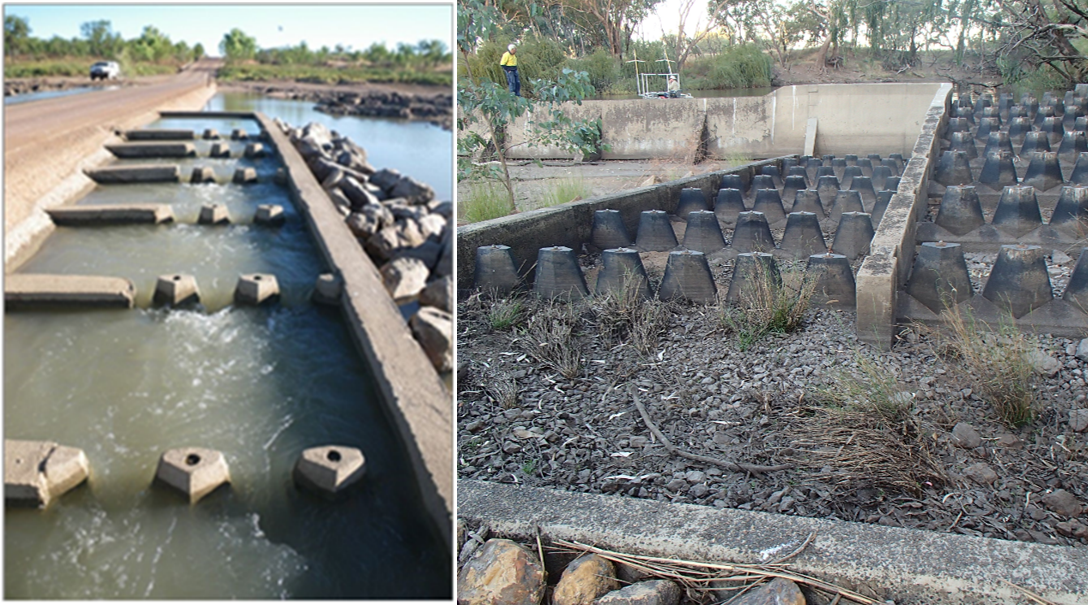|
|
Cone fishwayCone fishway Select from the tabs below Disclaimer: In addition to the standard disclaimer located at the bottom of the page, please note the Fishways (biopassage structures) disclaimer. Other name/sDragon's tooth fishway DescriptionCone fishways consist of a series of prefabricated cone-shaped concrete or plastic baffles installed across a concrete channel. This type of fishway arose from the unavailability of suitable materials to construct rock ramp fishways and for remote areas[4]. Cone fishways are most effective where there is limited headwater variation and relatively low head differential (<1.5 m)[3], however, trials have been successful at head differentials up to 3 m[4]. The conservative hydraulics at low flows (i.e. low velocities and turbulence levels) allow small fish to pass. At higher flows, the velocity and turbulence levels increase, along with the physical dimensions of the gaps between the baffles in the fishway, therefore allowing larger fish to pass[1]. Sub-typesThere are two main sub-types of cone fishways, based on the height/s of the cones in the channel: low cone fishway and high/low cone fishways. An example of a high/low cone fishway is the Glenore Weir fishway on the Norman River (Gulf of Carpentaria near Karumba). It was designed to operate over a broad range of river conditions, including high wet season flows, by adapting the design to a broad deep fishway channel with low cones for low flows and high cones for larger flows, but still allowing passage of fish as small as 10 mm long. Despite discharge increasing 20-fold during periods of high flow, with high turbulence through the centre of the channel, the edges remained relatively calm through the taller cones. Monitoring has also recorded ascent of barramundi up to 500 mm long[2]. An example of a low cone fishway is the Fitzroy barrage on the Fitzroy river. References
Last updated: 30 April 2021 This page should be cited as: Department of Environment, Science and Innovation, Queensland (2021) Cone fishway, WetlandInfo website, accessed 25 June 2024. Available at: https://wetlandinfo.des.qld.gov.au/wetlands/management/fish-passage/technologies/fishway-options/cone/ |

 — Department of Environment, Science and Innovation
— Department of Environment, Science and Innovation

